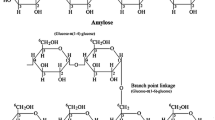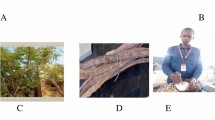The results of research on the use of sludge produced in the process of purification of drinking water (SPDW), which contains about 68% Fe2O3, as an additive in the production effective ceramic articles are presented. SPDW was added in amounts 40 – 60% into the batch for the production of effective ceramic articles; the firing temperature of the ceramic articles was 900, 1000, and 1050°C. The investigations showed that the addition of SPDW affects the properties of ceramic samples as follows: it lowers the density, strength in compression, and thermal conductivity and increases porosity. SPDW is a natural pigment that imparts a darker red color to the ceramic.





Similar content being viewed by others
Notes
Here and below, weight content, %.
References
I. A. Levitskii, Yu. G. Pavlyukevich, E. O. Bogdan, and O. V. Kichkailo, “Use of electroplating sludge for ceramic brick manufacture,” Steklo Keram., No. 3, 18 – 22 (2013); I. A. Levitskii, Yu. G. Pavlyukevich, E. O. Bogdan, and O. V. Kichkailo, “Use of electroplating sludge for ceramic brick manufacture,” Glass Ceram., 70(3 – 4), 83 – 88 (2013).
E. S. Khomenko, V. V. Koleda, O. A. Mirshavka, and V. R. Ripak, “Recycling wastes from ozokerite production in large-tonnage energy-conserving technology for fabricating construction ceramic,” Steklo Keram., No. 4, 44 – 48 (2014); E. S. Khomenko, V. V. Koleda, O. A. Mirshavka, and V. R. Ripak, “Recycling wastes from ozokerite production in large-tonnage energy-conserving technology for fabricating construction ceramic,” Glass Ceram., 71(3 – 4), 124 – 127 (2014).
J. M. F. Ferreira and S. M. Olhero, “Al-rich sludge treatments towards recycling,” J. Europ. Ceram. Soc., 22, 2243 – 2249 (2002).
M. Anderson and R. G. Skerratt, “Variability study of incinerated sewage sludge ash in relation to future use in ceramic brick manufacture,” British Ceram. Trans., 102(3), 109 – 113 (2003).
S. R. Teixeira, G. T. A. Santos, A. E. Souza, et al., “The effect of incorporation of a Brazilian water treatment plant sludge on the properties of ceramic materials,” Appl. Clay Sci., 53, 561 – 565 (2011).
S. N. Monteiro, J. Alexandre, J. I. Margem, et al., “Incorporation of sludge waste from water treatment plant into red ceramic,” Constr. Building Mater., 22(6), 1281 – 1287 (2008).
R. M. Ramirez Zamora, F. Espesel Ayala, L. Chavez Garsia, et al., “Optimization of the preparation conditions of ceramic products using drinking water treatment sludges,” J. Envir. Sci. Health A, 43, 1562 – 1568 (2008).
O. Kizinievič, R. Žurauskienė, V. Kizinievič, and R. Žurauskas, “Utilisation of sludge waste from water treatment for ceramic products,” Constr. Building Mater., 41, 464 – 473 (2013).
O. Mohammed, A. Ramadan Hanan, A. Fouad, et al., “Reuse of water treatment plant sludge in brick manufacturing,” J. Appl. Sci. Res., 4(10), 1223 – 1229 (2008).
HN 24:2003. Geriamojo vandens saugos ir kokybė Reikalavimai (2003).
Author information
Authors and Affiliations
Corresponding author
Additional information
Translated from Steklo i Keramika, No. 2, pp. 24 – 28, February, 2016.
Rights and permissions
About this article
Cite this article
Kizinievič, O., Žurauskienė, R., Kizinievič, V. et al. Use of Sludge from Drinking Water Purification in the Production of Effective Ceramic Articles. Glass Ceram 73, 58–61 (2016). https://doi.org/10.1007/s10717-016-9825-8
Published:
Issue Date:
DOI: https://doi.org/10.1007/s10717-016-9825-8




